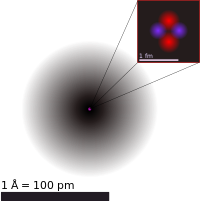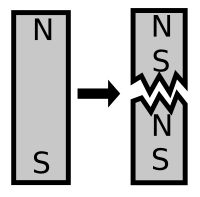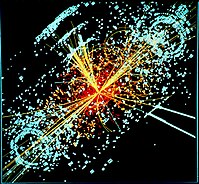
Possible Link between the Distribution of Atomic Spectral Lines and the Radiation–Matter‐Equilibrium in the Early Universe
Sign Up to like & getrecommendations! Published in 2020 at "Annalen der Physik"
DOI: 10.1002/andp.202000033
Abstract: The uncanny resemblance of the global distribution of all experimentally known atomic spectral lines to the Planckian spectral distribution associated with black body radiation at a temperature of T≈9000K is reported. This value coincides with… read more here.
Keywords: atomic spectral; radiation matter; early universe; distribution ... See more keywords

Black hole production of monopoles in the early universe
Sign Up to like & getrecommendations! Published in 2021 at "Journal of High Energy Physics"
DOI: 10.1007/jhep12(2021)145
Abstract: Abstract In the early universe, evaporating black holes heat up the surrounding plasma and create a temperature profile around the black hole that can be more important than the black hole itself. As an example,… read more here.
Keywords: black hole; hole production; black holes; production monopoles ... See more keywords

Early Universe: Tiny emissary from afar
Sign Up to like & getrecommendations! Published in 2017 at "Nature Astronomy"
DOI: 10.1038/s41550-017-0111
Abstract: The combined power of a space telescope, a large ground-based telescope and a gravitational lens made catching a small galaxy — 1/100 the mass of the Milky Way — at the cosmic reionization epoch feasible. read more here.
Keywords: emissary afar; tiny emissary; early universe; universe tiny ... See more keywords

On the difficulty of generating gravitational wave turbulence in the early universe
Sign Up to like & getrecommendations! Published in 2018 at "Classical and Quantum Gravity"
DOI: 10.1088/1361-6382/aad7f0
Abstract: A recent article by Galtier and Nazarenko [1] proposed that weakly nonlinear gravitational waves could result in a turbulent cascade, with energy flowing from high to low frequency modes or vice versa. This is an… read more here.
Keywords: gravitational wave; wave turbulence; cascade; early universe ... See more keywords

Early Universe in view of a modified theory of gravity
Sign Up to like & getrecommendations! Published in 2021 at "Classical and Quantum Gravity"
DOI: 10.1088/1361-6382/abc222
Abstract: We study the quantum evolution of the early universe, its semi-classical analogue together with inflationary regime, in view of a generalized modified theory of gravity. The action is built by supplementing the nonminimally coupled scalar-tensor… read more here.
Keywords: modified theory; term; view; theory gravity ... See more keywords

First emergence of cold accretion and supermassive star formation in the early universe
Sign Up to like & getrecommendations! Published in 2023 at "Monthly Notices of the Royal Astronomical Society"
DOI: 10.1093/mnras/stad1484
Abstract: We investigate the first emergence of the so-called cold accretion, the accretion flows deeply penetrating a halo, in the early universe with cosmological N-body/SPH simulations. We study the structure of the accretion flow and its… read more here.
Keywords: accretion; first emergence; cold accretion; early universe ... See more keywords

Chasing passive galaxies in the early Universe: a critical analysis in CANDELS GOODS-South
Sign Up to like & getrecommendations! Published in 2018 at "Monthly Notices of the Royal Astronomical Society"
DOI: 10.1093/mnras/stx2385
Abstract: We search for passive galaxies at $z>3$ in the GOODS-South field, using different techniques based on photometric data, and paying attention to develop methods that are sensitive to objects that have become passive shortly before… read more here.
Keywords: galaxies early; chasing passive; goods south; early universe ... See more keywords

Magnetism of massive stars in the Early Universe
Sign Up to like & getrecommendations! Published in 2019 at "Monthly Notices of the Royal Astronomical Society"
DOI: 10.1093/mnras/stz1665
Abstract: It is generally believed that the first stars were hot and massive because of the lack of efficient coolants in the metal-free primordial gas. This paper considers the thermal generation of the magnetic field in… read more here.
Keywords: stars early; massive stars; magnetic field; magnetism massive ... See more keywords

A universal 21 cm signature of growing massive black holes in the early Universe
Sign Up to like & getrecommendations! Published in 2019 at "Monthly Notices of the Royal Astronomical Society"
DOI: 10.1093/mnras/stz2198
Abstract: There is a hope that looking into the early Universe with next-generation telescopes, one will be able to observe the early accretion growth of supermassive black holes (BHs) when their masses were ∼104–106M⊙. According to… read more here.
Keywords: black holes; signature growing; growing massive; massive black ... See more keywords

Towards degeneracy breaking of early universe models
Sign Up to like & getrecommendations! Published in 2020 at "Physical Review D"
DOI: 10.1103/physrevd.101.023517
Abstract: There are many possibilities of scenarios in the early universe, which can give rise to the same observational signals due to the degeneracy among each other, caused by equivalence under the conformal transformations. In order… read more here.
Keywords: towards degeneracy; degeneracy; breaking early; universe models ... See more keywords

Neutrino nonstandard interactions via light scalars in the Earth, Sun, supernovae, and the early Universe
Sign Up to like & getrecommendations! Published in 2020 at "Physical Review D"
DOI: 10.1103/physrevd.101.095029
Abstract: Non-standard interactions (NSI) of neutrinos with matter mediated by a scalar field would induce medium-dependent neutrino masses which can modify oscillation probabilities. Generating observable effects requires an ultra-light scalar mediator. We derive general expressions for… read more here.
Keywords: sun supernovae; earth sun; supernovae early; neutrino ... See more keywords